Design and Testing of Various Ceiling Elements Made of Carbon Reinforced Concrete †
Abstract
:1. Introduction
2. Ceiling Elements Made of CRC
2.1. Ceiling Element 1
2.2. Ceiling Element 2
2.3. Ceiling Element 3
2.4. Ceiling Element 4
3. Analytical and Numerical Investigations
4. Conclusions and Outlook
References
- Schladitz, F.; Tietze, M.; Lieboldt, M.; Schumann, A.; Garibaldi, M.P.; Curbach, M. Carbon reinforced concrete in construction practice. In Proceedings of the IABSE Conference—Engineering the Developing World, Kuala Lumpur, Malaysia, 25–27 April 2018. [Google Scholar]
- Rizalla, S.H.; Tadros, G. FRP for prestressing of concrete bridges in Canada. ACI Spec. Publ. 2003, 215, 75–90. [Google Scholar]
- Peled, A.; Bentur, A.; Mobasher, B. Textile Reinforced Concrete (Modern Concrete Technology); CRC Press: Boca Raton, FL, USA, 2017. [Google Scholar]
- Scheerer, S.; Chudoba, R.; Garibaldi, M.P.; Curbach, M. Shells Made of Textile Reinforced Concrete—Applications in Germany. J. Int. Assoc. Shell Spat. Struct. (J. IASS) 2017, 58, 79–93. [Google Scholar] [CrossRef]
- Rempel, S.; Kulas, C.; Will, N.; Bielak, J. Extremely Light and Slender-Precast Pedestrian-Bridge Made Out of Textile-Reinforced Concrete (TRC). In High Tech Concrete: Where Technology and Engineering Meet, Proceedings of the 2017 Fib Symposium, Maastricht, The Netherland, 12–14 June 2017; Springer: Cham, Switzerland.
- Schumann, A.; Michler, H.; Schladitz, F.; Curbach, M. Parking slabs made of carbon reinforced concrete. Struct. Concr. 2018, 19, 647–655. [Google Scholar] [CrossRef]
- Homepage C³-project. Available online: www.bauen-neu-denken.de (accessed on 30 April 2018).
- Schneider, K.; Butler, M.; Mechtcherine, V. Carbon Concrete Composites C³—Nachhaltige Bindemittel und Betone für die Zukunft. Beton-und Stahlbetonbau 2017, 112, 784–794. [Google Scholar] [CrossRef]
- Homepage. Available online: https://tu-dresden.de/bu/bauingenieurwesen/imb/forschung/Forschungsfelder/TRC-C3/C3-vorhaben/C3-B2 (accessed on 30 April 2018).
- Schneider, K.; Butler, M.; Mechtcherine, V. Carbon Concrete Composites C³—Nachhaltige Bindemittel und Betone für die Zukunft. Beton-und Stahlbetonbau 2017, 112, 784–794. [Google Scholar] [CrossRef]
- May, S.; Michler, H.; Schladitz, F.; Curbach, M. Lightweight ceiling system made of carbon reinforced concrete. Struct. Concr. 2018, 1–11. [Google Scholar] [CrossRef]
- Hegger, J.; Will, N. Textile-reinforced concrete: Design models. In Textile Fiber Composites in Civil Engineering; Triantafillou, T.C., Ed.; Woodhead Publishing: Sawston, UK; Elsevier Ltd.: New York, NY, USA, 2016; pp. 189–207. [Google Scholar]

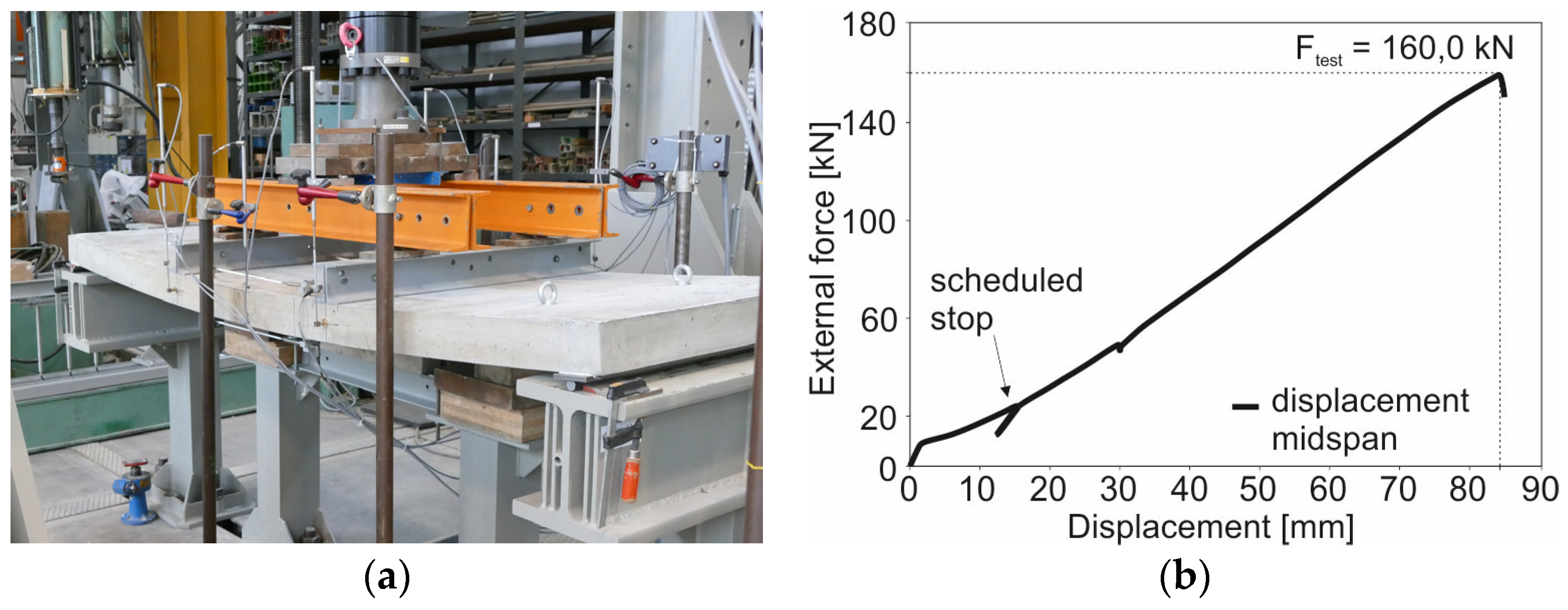
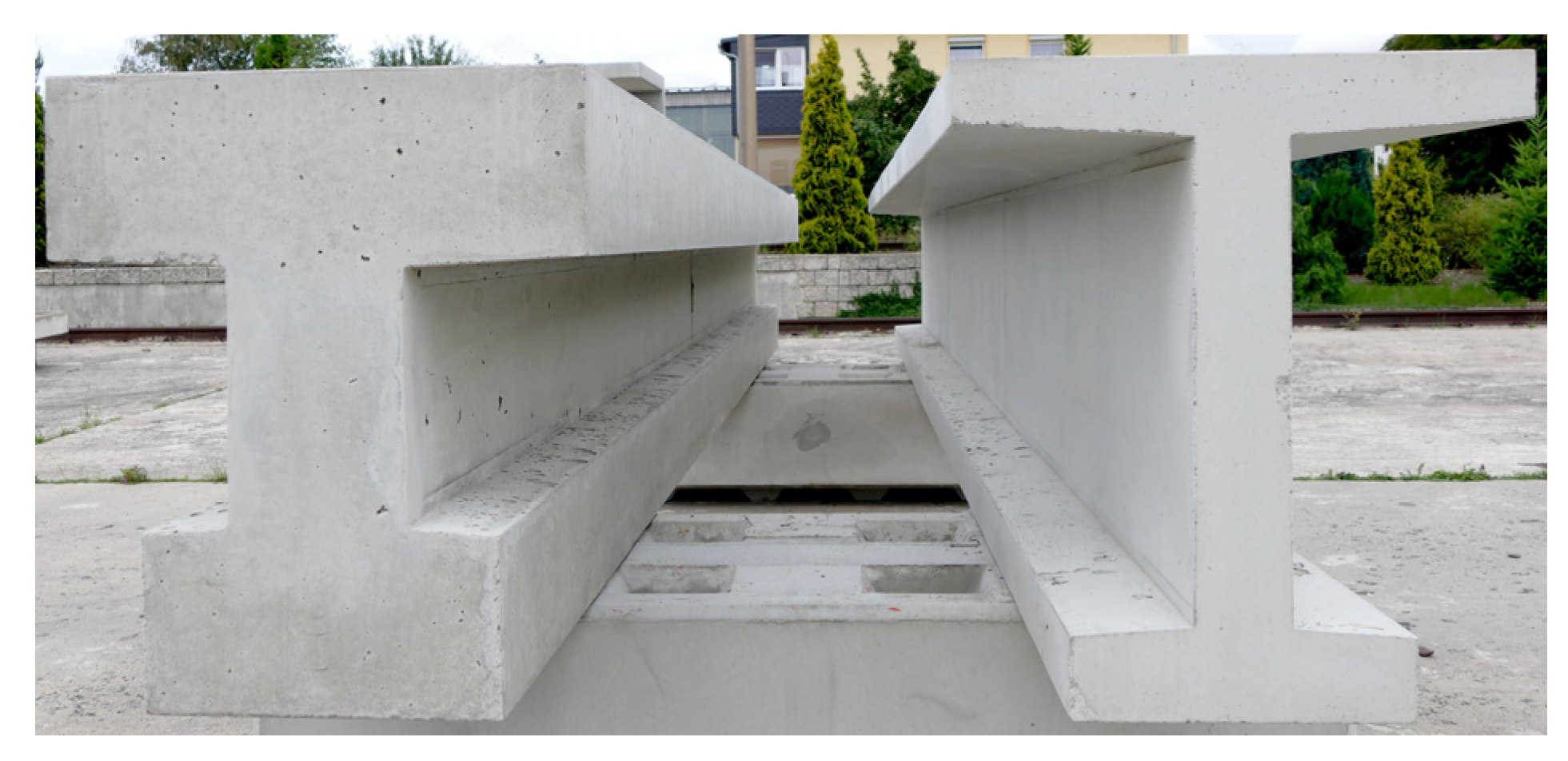
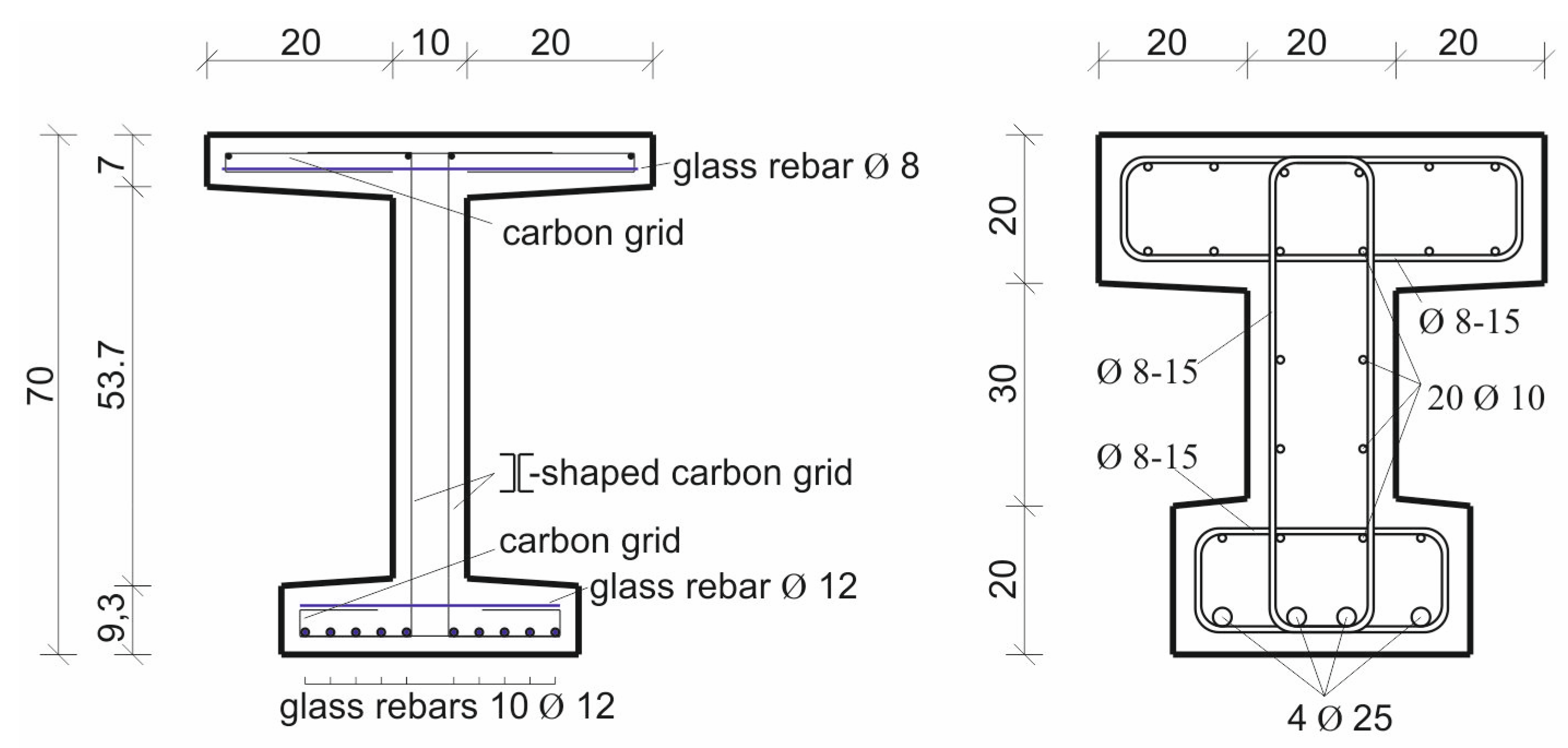
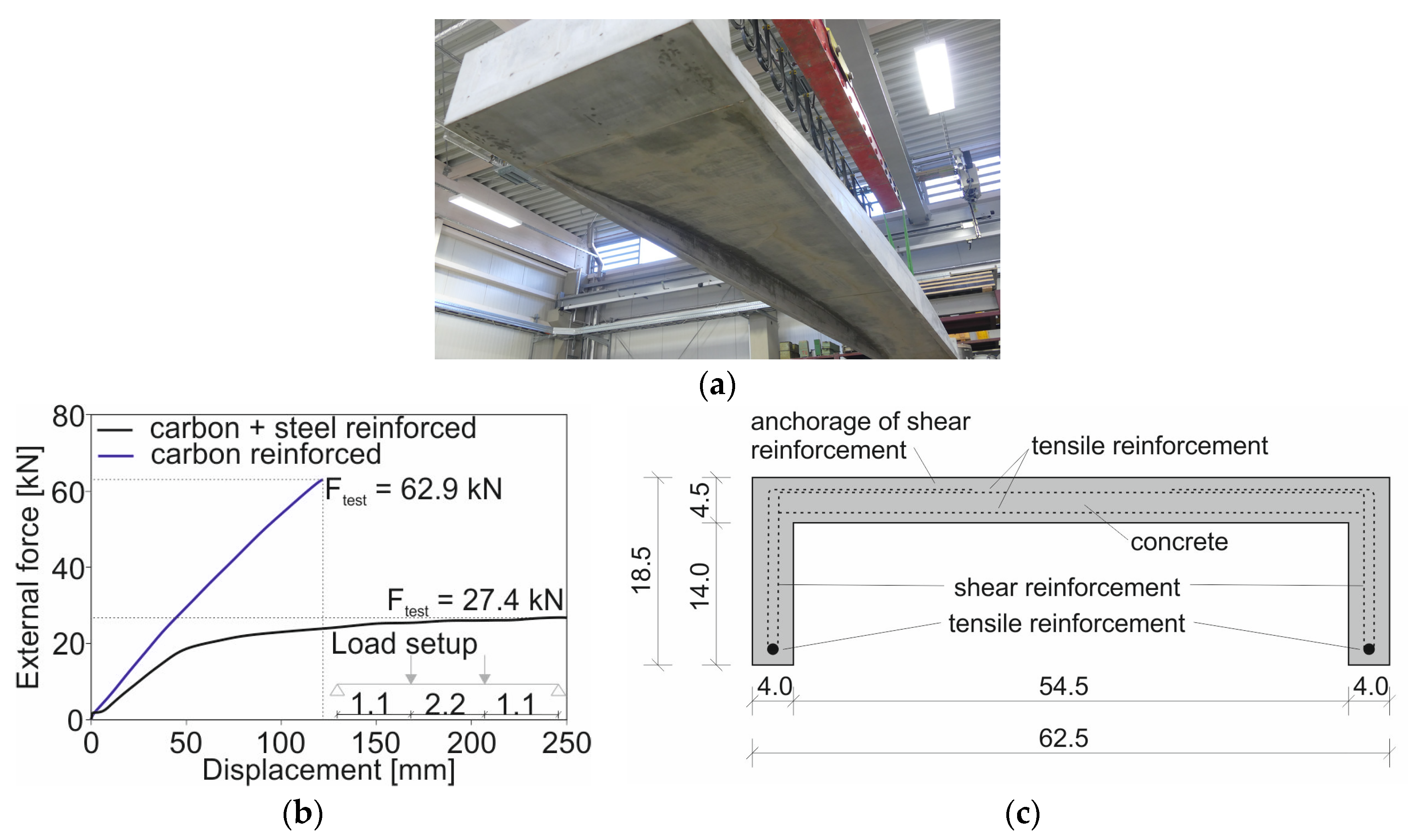
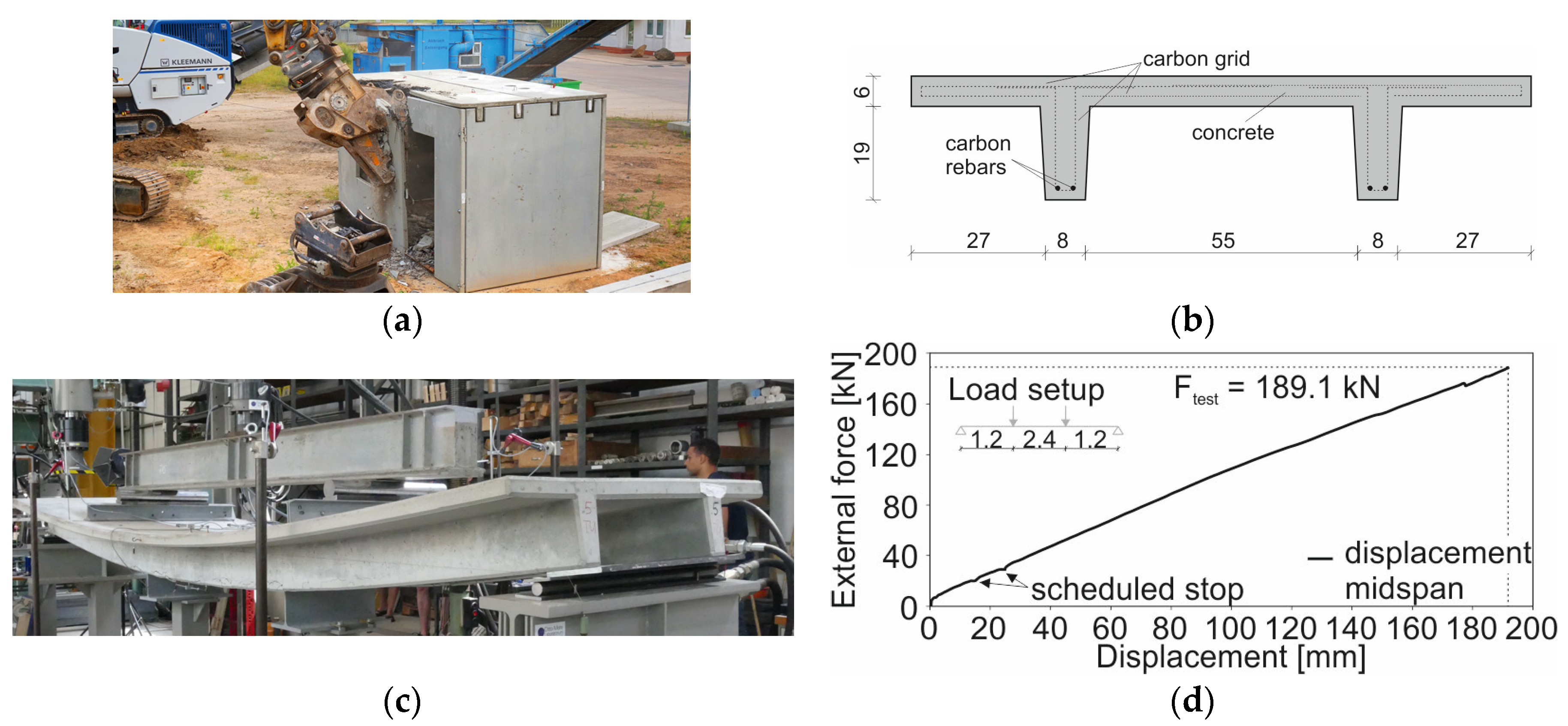

Publisher’s Note: MDPI stays neutral with regard to jurisdictional claims in published maps and institutional affiliations. |
© 2018 by the authors. Licensee MDPI, Basel, Switzerland. This article is an open access article distributed under the terms and conditions of the Creative Commons Attribution (CC BY) license (https://creativecommons.org/licenses/by/4.0/).
Share and Cite
Schumann, A.; May, S.; Curbach, M. Design and Testing of Various Ceiling Elements Made of Carbon Reinforced Concrete. Proceedings 2018, 2, 543. https://doi.org/10.3390/ICEM18-05436
Schumann A, May S, Curbach M. Design and Testing of Various Ceiling Elements Made of Carbon Reinforced Concrete. Proceedings. 2018; 2(8):543. https://doi.org/10.3390/ICEM18-05436
Chicago/Turabian StyleSchumann, Alexander, Sebastian May, and Manfred Curbach. 2018. "Design and Testing of Various Ceiling Elements Made of Carbon Reinforced Concrete" Proceedings 2, no. 8: 543. https://doi.org/10.3390/ICEM18-05436



